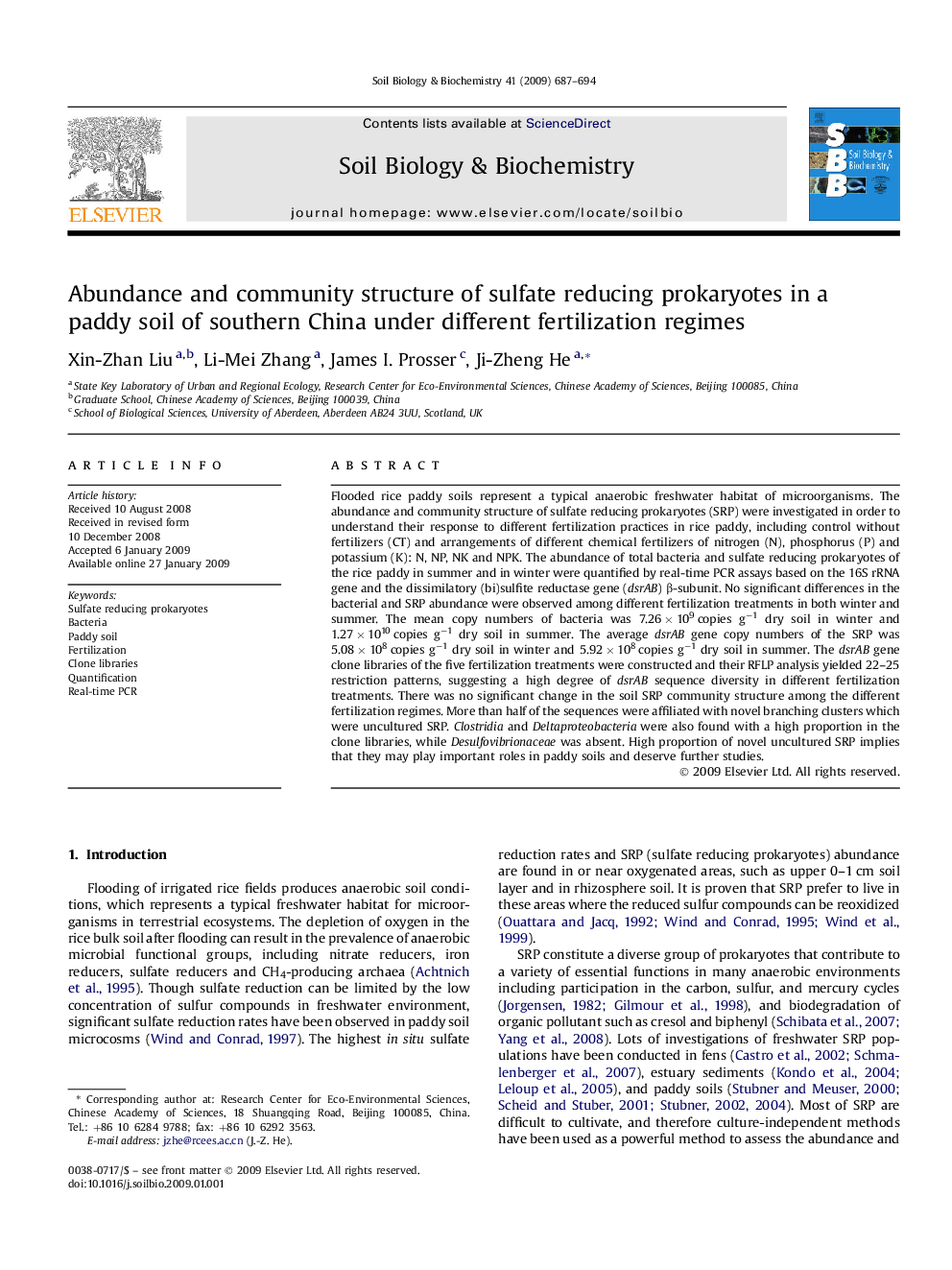| Article ID | Journal | Published Year | Pages | File Type |
|---|---|---|---|---|
| 2026528 | Soil Biology and Biochemistry | 2009 | 8 Pages |
Flooded rice paddy soils represent a typical anaerobic freshwater habitat of microorganisms. The abundance and community structure of sulfate reducing prokaryotes (SRP) were investigated in order to understand their response to different fertilization practices in rice paddy, including control without fertilizers (CT) and arrangements of different chemical fertilizers of nitrogen (N), phosphorus (P) and potassium (K): N, NP, NK and NPK. The abundance of total bacteria and sulfate reducing prokaryotes of the rice paddy in summer and in winter were quantified by real-time PCR assays based on the 16S rRNA gene and the dissimilatory (bi)sulfite reductase gene (dsrAB) β-subunit. No significant differences in the bacterial and SRP abundance were observed among different fertilization treatments in both winter and summer. The mean copy numbers of bacteria was 7.26 × 109 copies g−1 dry soil in winter and 1.27 × 1010 copies g−1 dry soil in summer. The average dsrAB gene copy numbers of the SRP was 5.08 × 108 copies g−1 dry soil in winter and 5.92 × 108 copies g−1 dry soil in summer. The dsrAB gene clone libraries of the five fertilization treatments were constructed and their RFLP analysis yielded 22–25 restriction patterns, suggesting a high degree of dsrAB sequence diversity in different fertilization treatments. There was no significant change in the soil SRP community structure among the different fertilization regimes. More than half of the sequences were affiliated with novel branching clusters which were uncultured SRP. Clostridia and Deltaproteobacteria were also found with a high proportion in the clone libraries, while Desulfovibrionaceae was absent. High proportion of novel uncultured SRP implies that they may play important roles in paddy soils and deserve further studies.
